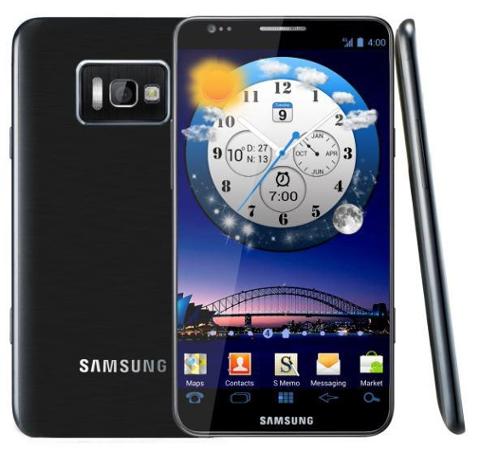Back in November, I gave
five reasons to stick with my first-gen Galaxy S phone. Now it's nearly March and the worst has indeed happened: I cracked the screen on the old warhorse and it's no longer usable. So today, I'll share my experience with the current hot-rod,
Samsung's Galaxy S III.
 Rooting
Rooting
One of the main reasons I held out with my old phone for so long was rooting, which everybody knows can be quite a challenge. I've been round and round with my Asus Transformer Prime (model TF-201), and still haven't successfully rooted the darned thing. The old Galaxy, however, worked great rooted. I ran the processor at its maximum 1-GHz speed all the time, and it was responsive in spite of being three-year-old technology. The S III was actually easy to root. Since it's been out for a little while now and is one of the top-ranked Android phones, lots of people have developed rooting procedures. I just followed the method presented on the XDA site for an AT&T phone. It took about 10 minutes to do the job. Once it rebooted, I had root. After that, the first change I made was to run System Tuner and max-out both processor cores to 1.5 GHz. Another solid reason to root the phone was to run all kinds of servers and Linux. For example, I like to be able to FTP and SSH into my phone for file transfers and maintenance. Root also lets me run a VNC server so I can show my Samsung's screen on my Linux notebook. Comes in handy for demos and capturing video tutorials.
Great Performance
Rooting and turning up the processor's clock turns an already fast phone into a super phone. There's no waiting for anything. Menus scroll by smoothly. Apps start in an instant. I also turned the WiFi power saver off. To do that, dial
*#0011# to get into service mode. Hit the menu button, then select WiFi. The power save mode button is at the bottom of all the text, just above the Ping Test button. Turning this off might give you a little more performance when on WiFi. Battery life is very good. It will run all day with moderate texting, Web browsing, and a few phone calls. When I'm going to use the phone a lot, I make sure to have my USB charging cable available, either at home or in the van, to keep the battery topped off. The S III's 4G LTE screen is awesome. The old Galaxy S had 3G, and I have to say, there's no comparison. I've clocked speeds of 13.4-Mb/s downloads and 2.5-Mb/s uploads. That's faster than my current home Internet connection through Brighthouse. Maybe not for long, though. I just found out that they're offering 60-Mb/s download speeds through their Lightning service. An extra $11 per month seems worth it.
Cost
The new blue 16-GB Galaxy S III ran me $199 with the two-year contract. You should make sure to shop around for the best deal. For example, Radio Shack had the same Galaxy S III in white for a bit less than I paid, though they didn't have a blue one. Best Buy had the phone for a similar price, but they always have a big line at the phone counter. AT&T also charged me a $36 activation fee. Sometimes if you ask, they'll waive that. Sometimes. Before I left the AT&T store, I also purchased the latest Otterbox cover for $36. Its two-piece design makes it easy to take off, and the rubberized and plastic shell offers considerable protection. I've dropped it a couple of times, onto hard surfaces, without problems, though it's not designed to protect the front screen from impact and isn't waterproof. You might also check out the $48 Otterbox, which has a matching belt clip.
The Contract
Yes, I went with a new two-year contract and stuck with AT&T. While I did root the phone, I have no intention of unlocking it. There's a lot of controversy about whether you can still legally unlock a phone. CTIA carriers simply want to cover their costs with their subsidized phone plans. I can see their point. If you get a discounted phone, with the agreement that you buy the service for a specified period of time, I think you should keep up your end of the bargain. My family has been with AT&T for a long time and we're pretty happy with its service. We could go to another carrier, change out all the phones and throw away all my discounts, but why? I have to pay for cell and data service from somebody. The extra hassle of switching around to save a couple of bucks just isn't worth it to me.
Conclusion
There's a reason the Samsung Galaxy S III is one of the most popular Android smartphones on the market. It's fast, it's plentiful and it works great out of the box. Tweaks are easy to apply and
well-documented. As for the price: Yes, it's certainly a long way from free. Remember the old hot-rodder's adage, "Speed costs money. How fast do you want to spend?" With the S III, you get a lot of performance and productivity for the price.



